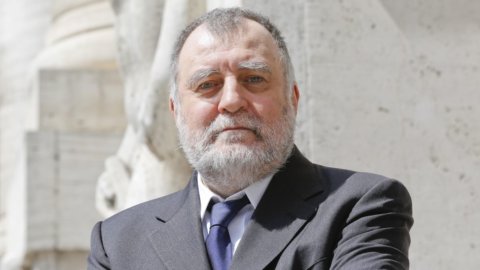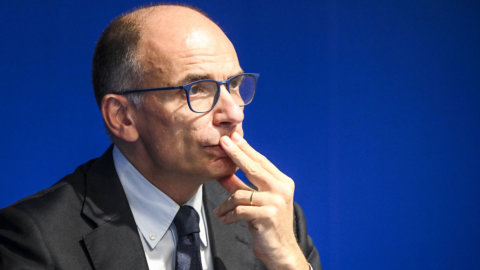Do you remember January and February? The world seemed to fall apart. The renminbi slipped and, at the coffee machine, the conversation invariably turned to China's foreign exchange reserves. For how many months would that be enough? What sad fate awaited the rest of the world that had gotten used to surviving by exporting in a China that was about to implode? And then oil, European banks, Isis.
And, above all, a US economy that was stagnating and a Fed that, in this context, could find nothing better than announcing four rate hikes for 2016, as many for 2017 and two more in 2018, for a total of ten. The stars didn't bode well. It's been six months. Some stars appear even more hostile. Two major European countries, France and Turkey, are officially in a state of emergency and another, the United Kingdom, has cast off its moorings and departed into the unknown. European banks have the same greenish tint.
The Eurozone, which had a very good six months (when everyone, in January, expected them to be mediocre) is starting to have a mediocre six months (Brexit effect) when everyone is expecting them to be good. Other stars, however, have realigned in a favorable direction. Although the renminbi is weak again, China's foreign exchange reserves are at the same (very high) levels as in January. The Shanghai Stock Exchange has become more composed and boring than ours. Chinese growth, albeit drugged, has once again exceeded the ambitious goals of the five-year plan. Oil, for its part, has found a balance again.
And above all, the US economy has started to grow again (since March) after six months of stagnation. Consumption is going well, manufacturing is back on track, more homes are being made and sold, and services are booming. In this context, the Fed finds nothing better than to spectacularly reverse its course of action. The ten planned hikes have all been frozen, at most there will be one in December. We repeat, ten hikes expected in January with the economy at zero growth and stock markets in free fall, zero hikes today with GDP at 2.5, inflation up by half a point and Wall Street exploring new historic highs every day.
What has changed? The short answer is that central banks are back in a state of emergency. They had been there between 2008 and 2014 and then, at a certain point, they had thought that, with due caution, things could begin to normalize. The path to normality has been bumpy, but the strategy has always been clear. The Fed announced tapering, she changed her mind, announced it again and finally did it. She then announced the first increase, she changed her mind, announced it again and, after months of hesitation, she decided to do it. Bonds and shares, which during the state of emergency had been encouraged in every way to rise in price, were ordered to stop in May 2015 with the famous chat between Yellen and Lagarde on the "rather expensive" markets, a another sign of normalization.
Even Europe and Japan, with the devaluation of the euro and the yen, thought for some time that they were out of the loop. Then there were the six months of American stagnation, the January fear over China, the disappointment over Abenomics. Most recently Brexit, Nice, Turkey, European banks. Every bad news, which under normal conditions should cause Treasuries to rise and stock markets to fall, makes central banks more convinced of the need to return to the state of emergency, the one that all assets, financial and otherwise, like so much, and makes them climb all together.
And then, let's face it, there is the fact that in January Clinton had the victory in her pocket while today things are more uncertain. Why hold back the markets by going back to talking about rates when you can let them run towards new highs precisely in the days when the Trump who would like to denounce the weakness of the economy is crowned the official Republican candidate? Here then is the Fed silent, the Bank of England is preparing to cut rates, credit easing and more Qe, China continues with expansionary measures and the ECB is preparing to cut again and expand Qe in September.
As for Japan, even if Kuroda is at pains to say that there will be no helicopter money, as we want to call a policy in which the public deficit will rise, after the Abenomics relaunch, to over 7 per cent and the central bank will finance it for two third parties? AND it is not already in full helicopter money a country where the gross debt grows every year but the one in private hands continues to fall? But that's not enough. Favorable alignment includes two more stars. The first is the positioning on the bags, which is rather light. It was convinced that 2100-2130 represented an impassable ceiling, approaching which it was only necessary to sell. Instead, it has been overcome and many have suddenly found themselves light and forced to cover themselves.
The second star is earnings. They were expected to be disappointing and here they are instead better than the estimates and not just the usual symbolic cent, but, in many cases, much more. Earnings quality also looks good. Technology discovers a new gold mine in the cloud. Banks get around margin erosion by lending more. Pharmaceuticals are fine. This, at least, is what you see in America, but it is likely that Europe will be the same. How long will this favorable alignment last? At least until the US election in November. Between now and the end of the year is also the time needed to measure the effects of Brexit. Until it is clear whether the Eurozone economy will be able to absorb the negative effect, the ECB will prefer to err on the side of prudence.
As for Japan, Abe will try in every way to exploit the electoral victory to revive its expansionary policy. US growth, for its part, will probably remain above two per cent. After the elections, there will be talk of raising interest rates again, also because US inflation, in the meantime, will have risen by another half percentage point. Always against the tide, and often right, Jeffrey Gundlach, a bond bull for years, claims that the bond bull market is over. We will see. What is certain is that there is an increasingly evident asymmetry between what (a lot) can be lost in the coming years on long and risky bonds and what (a little) can be gained.
Equities will probably be better equipped to deal with a possible scenario of higher inflation, especially if the pick-up in earnings forecast for 2017 is confirmed. For the moment, however, it seems prudent to us to avoid chasing the US stock market at these levels. Better to buy Europe on weakness, there is more value. In the next months, if the dollar holds strong, there will be interesting opportunities to buy gold and raw materials. On bonds, among the few instruments that offer value are 1.75-year Treasuries above 1.61 per cent (we are now at XNUMX) and some local currency emerging markets.




